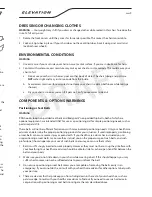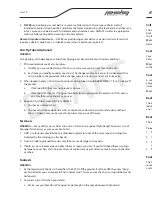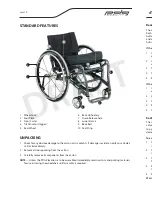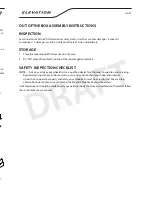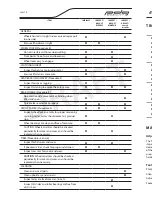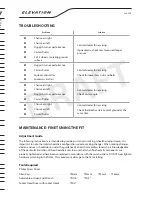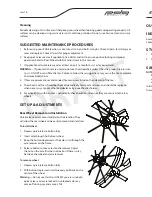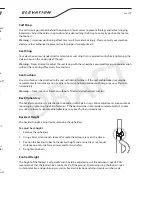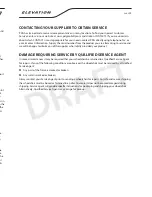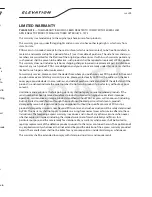
DRAFT DRAFT
page
23
page
6
CONTACTING YOUR SUPPLIER TO OBTAIN SERvICE
PDG has trained customer service representatives in many locations. To find your nearest Customer
Service Center, visit our web site at www.pdgmobility.com and click on CONTACTS. If you are uncertain
about which CONTACT is most appropriate for your needs, contact PDG directly using telephone, fax, or
e-mail contact information. Supply the serial number from the product you are attempting to service and
we will be happy to inform you of the supplier who initially provided your product.
DAMAGE REQUIRING SERvICE BY QUALIFIED SERvICE AGENT
In some circumstances it may be required that your wheelchair be returned to a Qualified Service Agent
for repairs. If any of the following conditions are observed, the wheelchair must be serviced by a Qualified
Service Agent:
6
Any part of the frame is cracked or broken
6
Any weld is cracked or broken
Always contact your Service Agent prior to sending a wheelchair for repairs. For safe and secure shipping,
the wheelchair must be boxed or fastened to a pallet to ensure it does not become damaged during
shipping. Service agent will provide specific instructions for packaging and shipping your wheelchair.
Alternatively, Qualified Service Agent may arrange for pick-up.
Be aware of any removable (detachable) parts. These must NEVER be used for hand-held or lifting
supports, as they may be inadvertently released, resulting in possible injury to the user and/or assistant(s).
When learning a new assistance technique, have an experienced assistant help before attempting it
alone.
Tilting
6
WARNING: DO NOT
tilt the wheelchair without assistance.
When tilting the wheelchair, an assistant should grasp the back of the wheelchair on a non-removable(
non-detachable) part. Inform the wheelchair occupant before tilting the wheelchair and remind him/her
to lean back. Be sure the occupant’s feet and hands are clear of all wheels.
Tilting – Curbs
After mastering the techniques of tilting the wheelchair, use this procedure to tackle shallow curbs, short
stairs, etc.
METHOD 1 - Wheelchair With Step Tubes
Apply a continuous downward motion until the balance point
is achieved and the front casters clear the curb. At this point,
the assistant will feel a difference in the weight distribution.
Roll the wheelchair forward and slowly lower the wheelchair in
one continuous movement. Do not let the wheelchair drop the
last few inches to the ground. This could result in injury to the
occupant. Push the wheelchair forward until the rear wheels
roll up and over the curb.
METHOD 2 - Wheelchairs without Step Tubes
Unless the first assistant has exceptional upper body
strength, it is recommended that METHOD 2 use two (2)
assistants. The second assistant should be positioned at the
front of the wheelchair lifting upward on a non-removable
(non-detachable) part of the wheelchair frame when lifting
the wheelchair and stabilizing the wheelchair when the
wheelchair is being lowered to the ground.
The first assistant should stand on the sidewalk and turn the
wheelchair so that the rear wheels are against the curb. The
wheelchair should be tilted back to the balance point and, in one continuous downward movement, the
rear wheels should be pulled up and over the curb. DO NOT return the front casters to the ground until
the wheelchair has been pulled backward far enough for the front casters to clear the edge of the curb.

